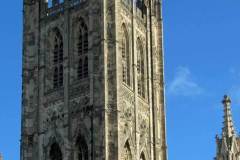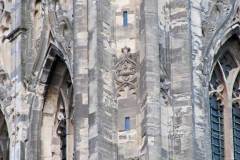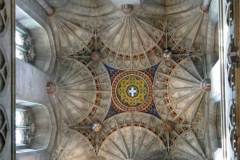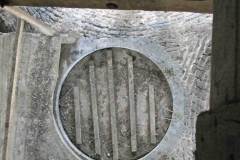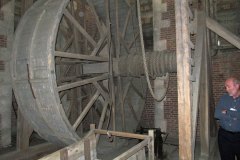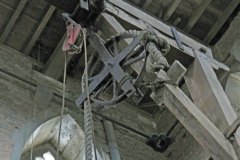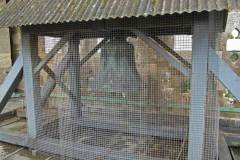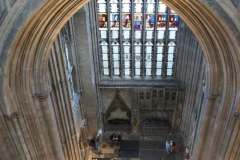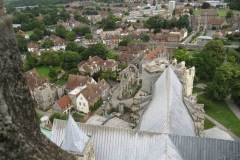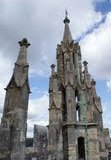The present central tower was designed by the architect John Wastell and completed in 1498. It is known as Bell Harry by virtue of the original bell given in 1288 by Prior Henry of Eastry, to be hung on the roof of the tower as it then stood. The present bell was recast by Joseph Hatch of Ulcombe in 1635 – it weighs 1 cwt. The tower has an inner lining of bricks – nearly half a million of them – and cladding of Caen stone. Apart from special visit days, there is no public access to the tower or to the features described below. Access may be gained through a small door in the south west transept, leading to 277 narrow steps.
What’s of interest:
- the tower is prominent for miles around the city, and stands 250 feet high (over 75 metres) to the top of its pinnacles (Image 1)
- Archbishop John Morton played a leading role in organising and financing construction of the tower – his rebus (a beer barrel or tun plus letters JMOR) can be seen in the external stone work (Image 2)
- the fan vaulting seen from below is one of the most striking views in the cathedral (Image 3) – note the letters P (Prior), T (Thomas) and G (Goldstone) which surround the central blue shield with a white cross (arms of Christ Church Priory)
- this central shield and cross can be removed as a trap door – it is over 5 feet in diameter (Image 4 shows it from above)
- beside this trap door still stands a ‘hamster wheel’ large enough for two men, used to raise bricks, stone, and tools to the ceiling level of the tower (Image 5), together with its winding gear (Image 6) – these were used up until the 1970s when they failed (comprehensively) to pass modern Health and Safety tests; their last official use was to raise TV cameras used for the Enthronement of Donald Coggan in 1974
- the present bell (Image 7) sits on the roof encased in a metal cage, operated for morning Eucharist and evening curfew by an electro-mechanical hammer
- views from this vantage point are spectacular both internal (Image 8) and external (Image 9)
- pinnacles replaced in 1920s and roof exit door (Image 10)
Sources: Bell (2009) and Canterbury cathedral pamphlet on Bell Harry Tower (1995)
DL

